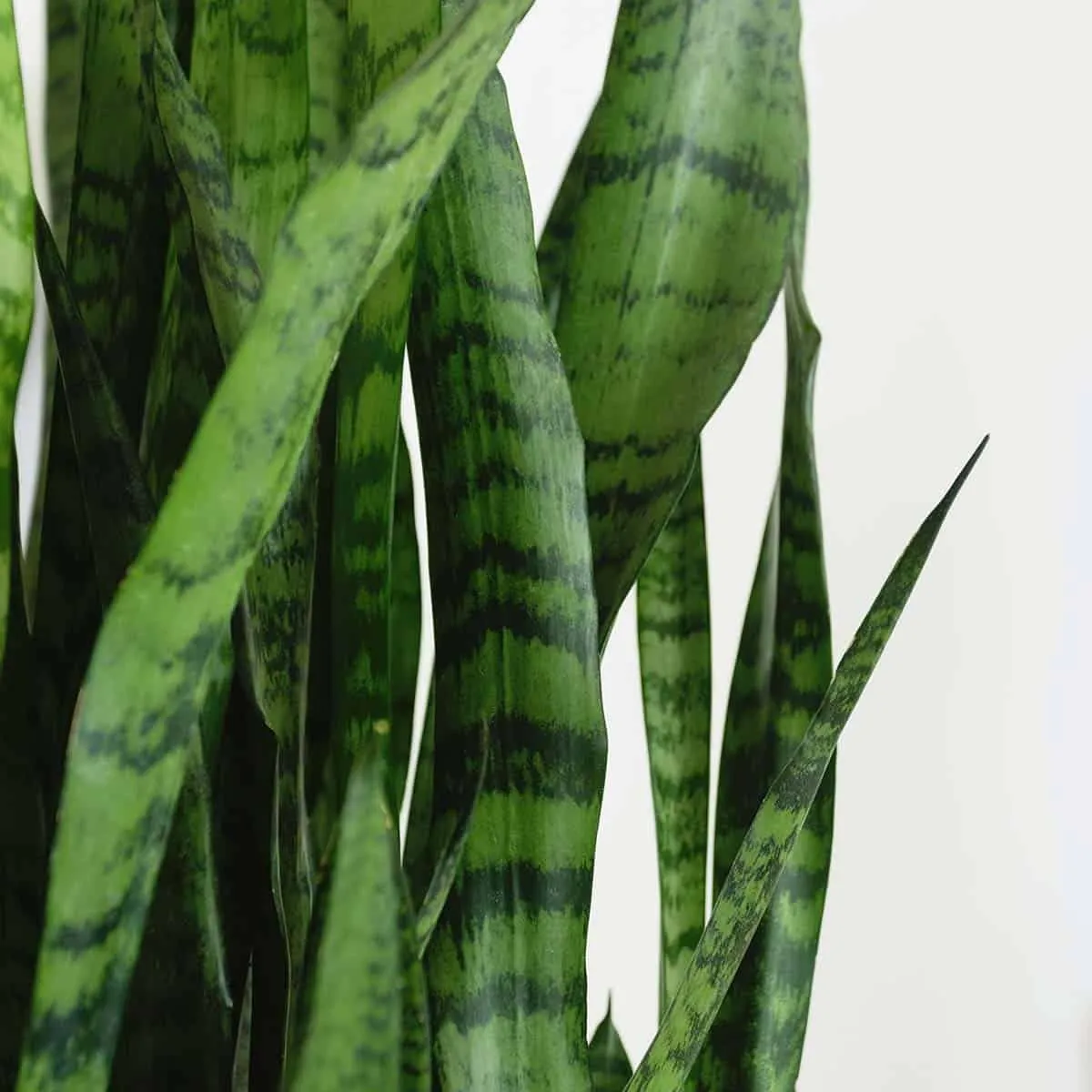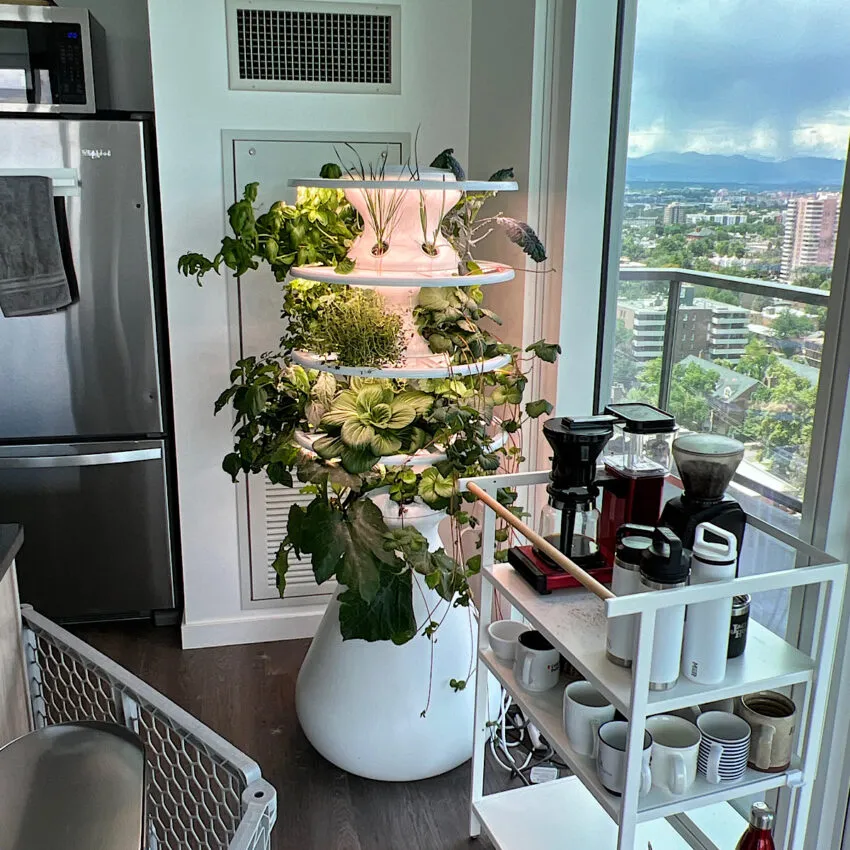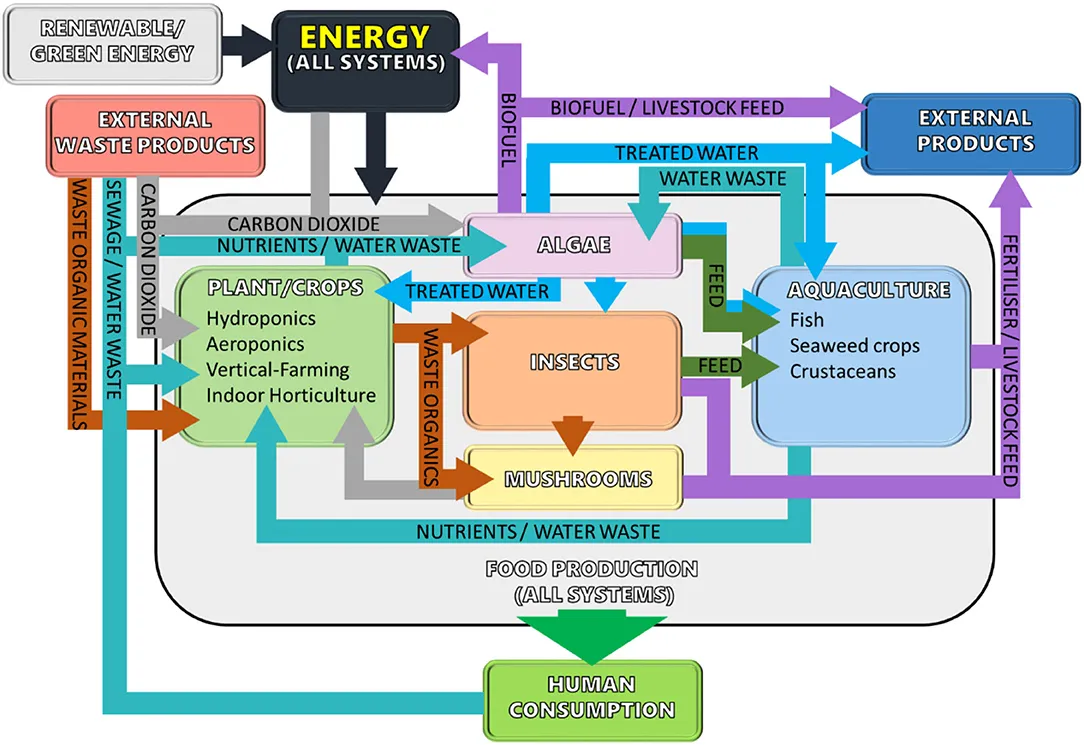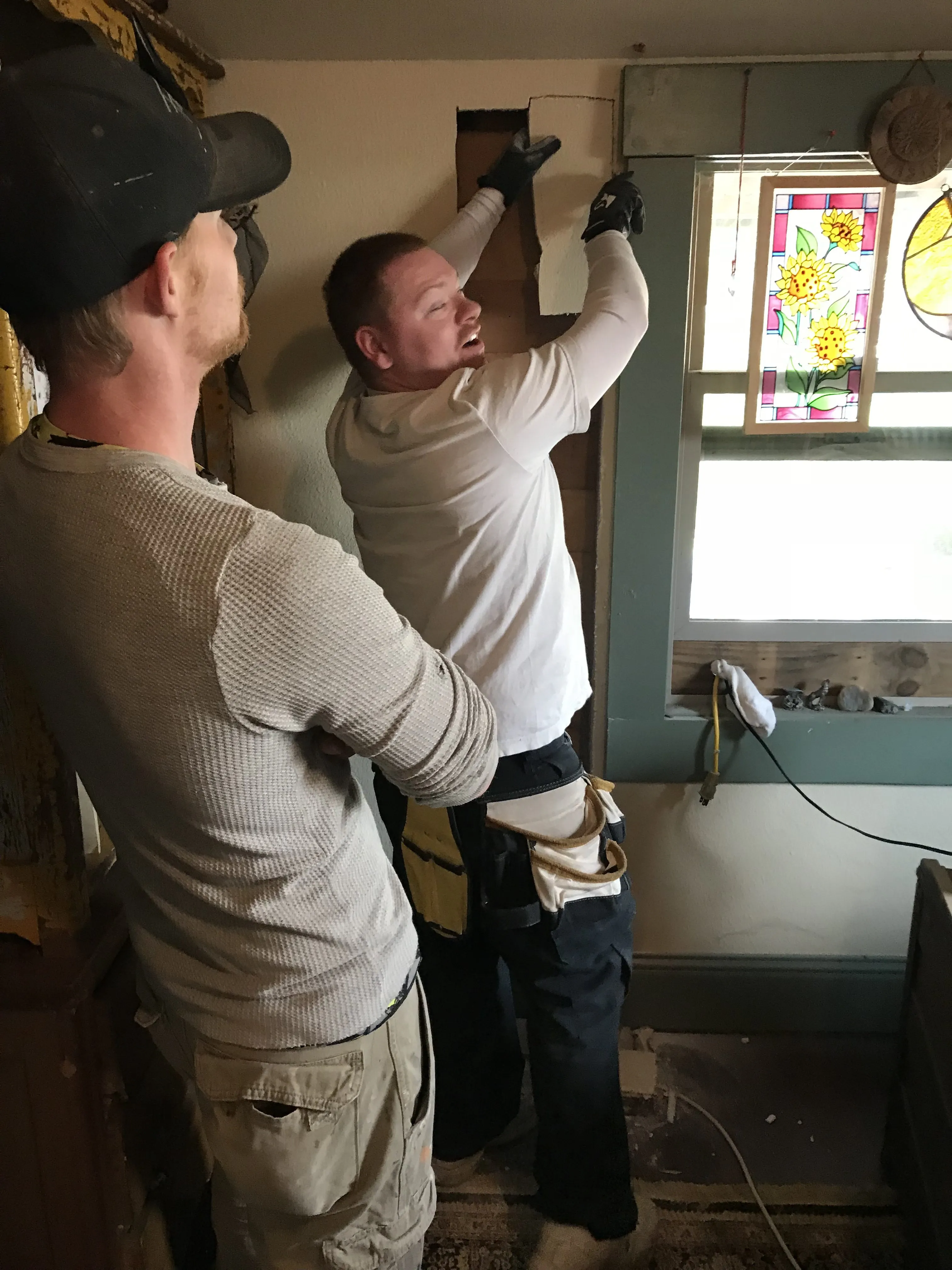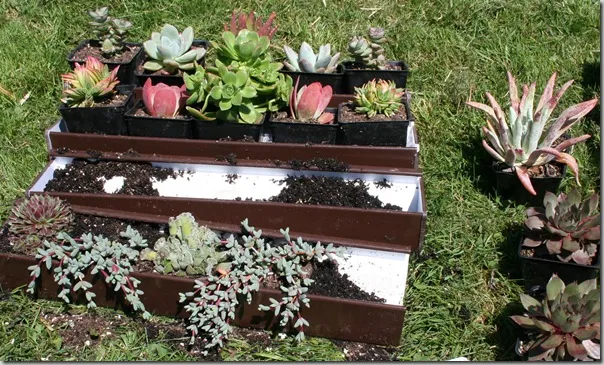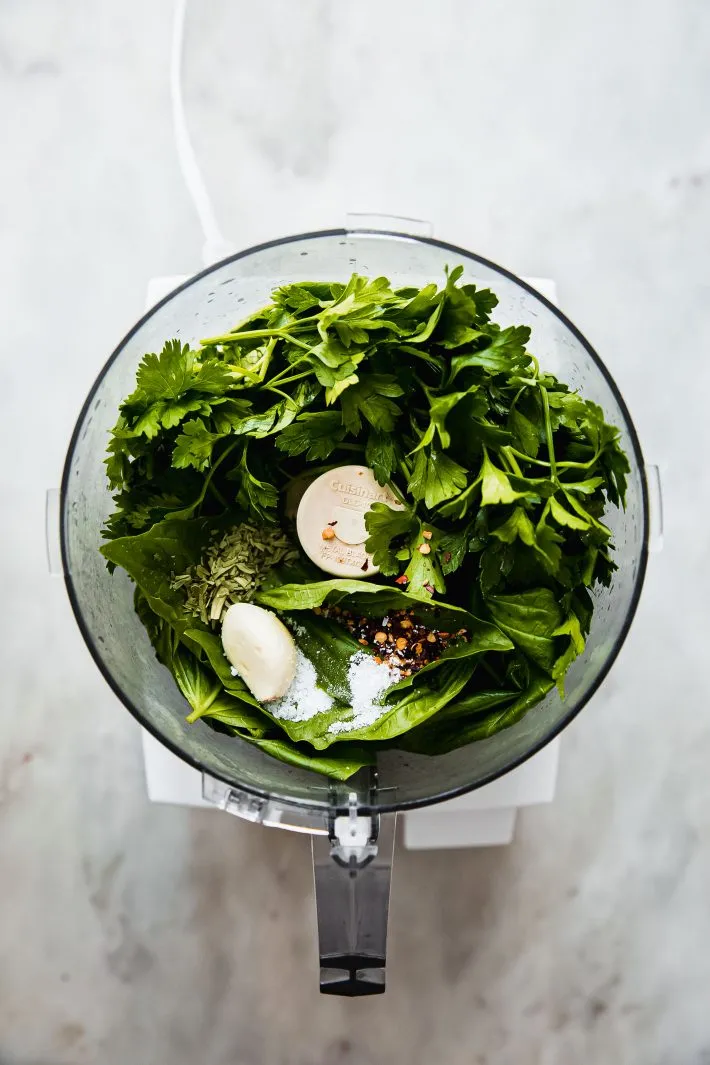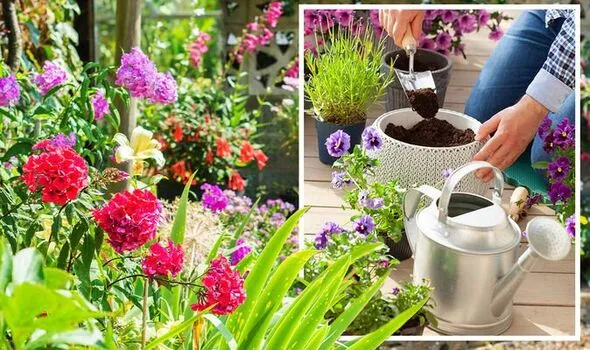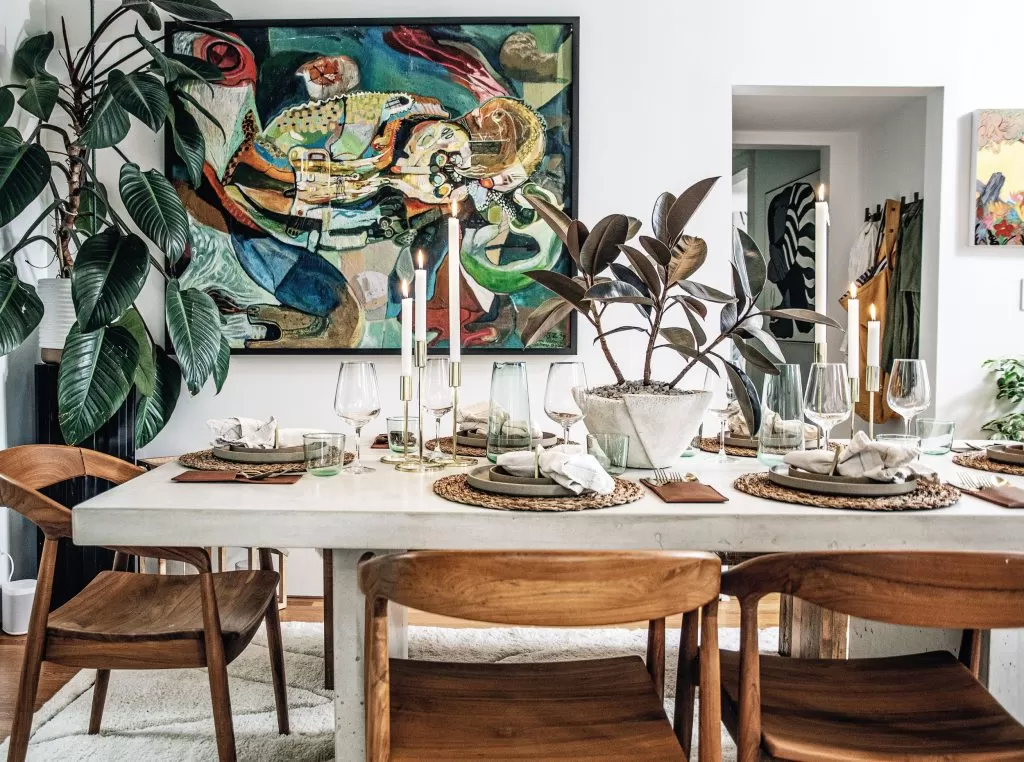- Transform limited space into a flourishing greens patch.
- Grow over a dozen plants in just one square foot.
- Simple DIY project using salvaged or new PVC pipe.
- Enjoy fresh lettuce, herbs, kale, and more right at your fingertips.
Living with limited garden space shouldn’t mean saying goodbye to fresh, homegrown salads. As enthusiasts at Thelittle.garden, we understand the desire to cultivate your own food, no matter how small your footprint. That’s where the magic of vertical gardening comes in, and we’re particularly excited about the potential of mini vertical salad towers. These clever structures let you stack plants vertically, maximizing your yield in minimal space. Imagine harvesting fresh lettuce, peppery arugula, or fragrant herbs from a tower tucked away on your balcony, patio, or even a sunny corner indoors. Building your own is simpler than you might think, offering a rewarding way to embrace the vertical revolution and enjoy your own vibrant salad garden.
Contents
- Why Go Vertical for Your Salad Greens?
- Building Your DIY Mini Vertical Salad Tower
- Gathering Your Materials
- Step-by-Step Tower Construction
- Planting Your Mini Tower for Success
- What Can You Grow in Your Mini Salad Tower?
- Caring for Your Vertical Greens
- Addressing Common Questions
- No Time to Build? Explore Ready-Made Options
- Start Your Vertical Salad Journey Today!
Why Go Vertical for Your Salad Greens?
Gardening in small spaces presents unique challenges. Traditional row planting quickly eats up valuable real estate. Vertical gardening bypasses this issue entirely by utilizing upward space. For leafy greens like lettuce and spinach, as well as many herbs, this is a perfect solution. They don’t need deep root systems or vast horizontal spread, making them ideal candidates for stacking in a tower.
The benefits of a mini vertical salad tower go beyond just saving space:
- Increased Yield: Grow significantly more plants in the same square foot compared to flat beds.
- Easier Harvesting: Greens are at a convenient height, no more bending down for every leaf.
- Reduced Pests and Diseases: Getting plants off the ground can help deter common garden pests like slugs and improve air circulation, reducing fungal issues.
- Efficient Watering: Tower designs can incorporate smart watering systems, ensuring moisture reaches roots effectively.
- Aesthetic Appeal: A lush green tower is a beautiful living sculpture for any space.
Years ago, I experimented with a DIY vertical tower made from salvaged PVC pipe. I planted basil and bok choy. While the basil eventually got a bit leggy (a lesson learned about consistent care!), the bok choy absolutely thrived. That experience solidified my belief in the power of vertical growing for greens. It showed me firsthand how much food you can produce even when space is tight.
Building Your DIY Mini Vertical Salad Tower
Creating your own mini vertical salad tower from PVC pipe is a fantastic project for a weekend. It reuses materials and gives you a custom planter perfectly suited for your space. While you can buy new PVC, I encourage you to explore sources for salvaged pipe – construction sites, plumbing companies, or even local scrap yards might have pieces they’re discarding. Reusing is always a win for the planet!
The basic idea is to create a tall pipe with holes drilled along the sides, which will serve as planting pockets. A smaller pipe inside helps with watering.
Gathering Your Materials
You’ll need a few key items for this project:
- Large PVC Pipe: Approximately 4 feet long with a 6 to 8-inch diameter. This is the main body of your tower.
- Small PVC Pipe: Approximately 4 feet long with a 1½ to 2-inch diameter. This pipe will sit inside the larger one for watering.
- Potting Soil: Use a good quality, lightweight potting mix that drains well.
- Seedlings: About 16-17 small seedlings of your chosen greens or herbs to start, plus a few for the top.
- Recycled Cardboard Pieces: Roughly 2-inch squares. These are temporary helpers during planting.
- Tools: A cordless or electric drill, a 1-1/2 inch hole saw bit for the drill, a ¼ inch drill bit, a tape measure, and a pencil.
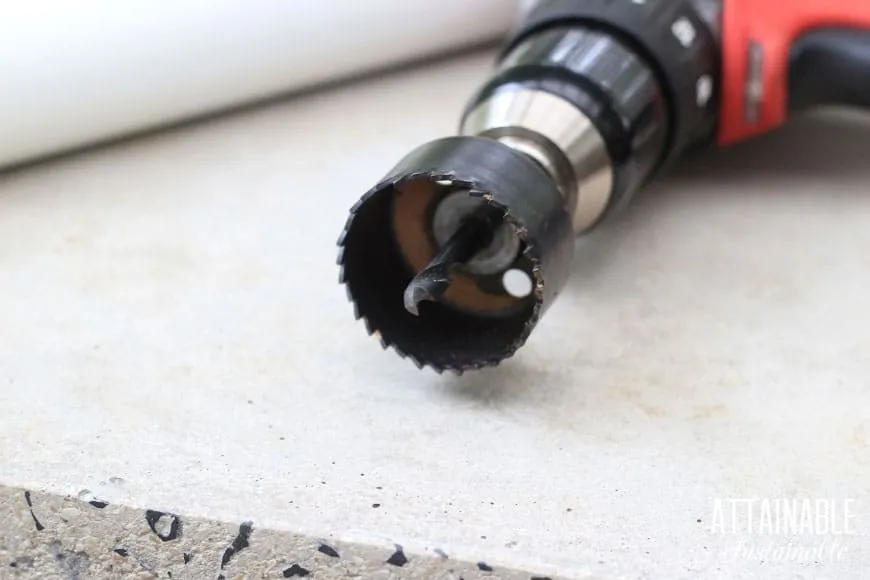 A hole saw drill bit attached to a power drill, ready for cutting planting pockets in a PVC pipe.
A hole saw drill bit attached to a power drill, ready for cutting planting pockets in a PVC pipe.
Step-by-Step Tower Construction
- Mark Your Planting Lines: Stand the large PVC pipe upright. Use your pencil and tape measure to mark four evenly spaced vertical lines down the outside of the pipe. These will guide where you drill your planting holes.
- Establish the Base: Measure about 12 inches from one end of the large pipe and draw a line all the way around the circumference. This marks the section that will be buried or sit in your base container, without planting holes. It’s helpful to write “DOWN” on this end as a reminder.
- Drill the First Holes: Using your drill fitted with the 1-1/2 inch hole saw, drill a hole where one of your vertical lines crosses the 12-inch base line. Drill a second hole directly opposite it on another vertical line at the same height. Don’t worry about perfect precision; “in the ballpark” works just fine!
- Continue Drilling Up: Move up each of the first two vertical lines, drilling holes about every 10 inches. You’ll end up with two columns of four holes each.
- Create Alternating Pockets: On the remaining two vertical lines, drill holes, but offset them. Place each new hole diagonally from the holes adjacent to it on the other lines. This creates a staggered pattern, giving each plant more space and light. Drill three holes on each of these lines.
- Prepare the Watering Pipe: Take your smaller PVC pipe. Use the ¼ inch drill bit to drill about 30 randomly placed holes along its entire length. These perforations allow water to seep out into the soil.
- Set Up Your Tower:
- In-Ground: Dig a 10-inch deep hole where you want your tower to stand. Bury the marked “DOWN” end of the large pipe into the hole, almost up to the first set of planting holes. Backfill with soil to secure it.
- Container Use: If using a pot or bucket (great for patios!), select a large container (like a 5-gallon bucket) and drill several drainage holes in the bottom. Add a layer of gravel or coarse material about halfway up for drainage. Place the large pipe on top of the gravel and add soil around it, filling the container.
 A section of white PVC pipe showing alternating, offset holes drilled for planting a vertical salad tower.
A section of white PVC pipe showing alternating, offset holes drilled for planting a vertical salad tower.
Planting Your Mini Tower for Success
Getting your seedlings into those side pockets can feel a little tricky, but it’s manageable. The goal is to get the plant in place without losing all your soil through the hole.
- Position the Watering Pipe: Center the small, perforated PVC pipe inside the larger tower pipe. The top of the inner pipe should be slightly higher than the top of the outer pipe. You can add a bit of soil inside the large pipe initially to help position the small pipe if needed.
- Add the First Layer of Soil: Gently fill the large pipe with potting soil up to the level of the lowest set of planting holes, keeping the inner pipe centered.
- Plant the Bottom Row: Take one of your cardboard squares and fold it into a ‘V’ or funnel shape. Place it inside one of the lowest planting holes. Carefully slide a seedling’s root ball into the hole, using the cardboard as a guide to keep the soil in. Once the seedling is nestled in, carefully pull and bend the cardboard piece into place between the seedling and the edge of the hole. This temporary barrier helps hold the soil while the roots establish. Be gentle not to crush your seedling!
- Repeat and Layer: Continue this process for all the holes in the lowest row. After the row is planted, add more potting soil to reach the next level of holes. Lightly water the seedlings in this layer to help settle the soil.
- Work Your Way Up: Repeat the planting process, adding soil layer by layer and planting seedlings into each row of holes until you reach the top.
- Top it Off: Plant a few extra seedlings or even seeds on the very top surface of the tower for maximum yield.
 Inserting a smaller perforated PVC pipe inside a larger main pipe for irrigation in a DIY vertical garden tower.
Inserting a smaller perforated PVC pipe inside a larger main pipe for irrigation in a DIY vertical garden tower.
What Can You Grow in Your Mini Salad Tower?
The best plants for a mini vertical salad tower are those that don’t require extensive root space and have a relatively compact growth habit. Leafy greens and herbs are perfect!
Here are some popular and suitable choices:
- Lettuce: Various loose-leaf and butterhead varieties.
- Lactuca sativa
- Common Name: Lettuce
- Zone: 4-9 (typically grown as an annual)
- Light: Full sun to partial shade
- Humidity: Moderate
- Water: Consistent, keep soil moist
- Kale: Dwarf or smaller varieties work well.
- Brassica oleracea var. sabellica
- Common Name: Kale
- Zone: 7-10 (typically grown as an annual)
- Light: Full sun to partial shade
- Humidity: Moderate
- Water: Consistent, keep soil moist
- Spinach: Quick-growing and compact.
- Spinacia oleracea
- Common Name: Spinach
- Zone: 2-9 (typically grown as an annual)
- Light: Full sun to partial shade
- Humidity: Moderate
- Water: Consistent, keep soil moist
- Bok Choy: Sturdy and productive.
- Brassica rapa var. chinensis
- Common Name: Bok Choy (Pak Choi)
- Zone: 4-7 (typically grown as an annual)
- Light: Full sun to partial shade
- Humidity: Moderate
- Water: Consistent, keep soil moist
- Herbs: Basil, parsley, cilantro, mint (plant mint carefully as it can spread!), thyme, oregano.
- Basil: Ocimum basilicum, Sweet Basil, Zone 4-11, Full sun, Moderate humidity, Consistent water.
- Parsley: Petroselinum crispum, Parsley, Zone 5-9 (often grown as annual), Full sun to partial shade, Moderate humidity, Consistent water.
- Cilantro: Coriandrum sativum, Cilantro, Zone 2-11 (grown as annual), Full sun to partial shade, Moderate humidity, Consistent water.
- Strawberries: Planting strawberries vertically keeps the fruit off the ground, protecting them from pests and rot.
- Fragaria x ananassa
- Common Name: Garden Strawberry
- Zone: 5-8 (depends on variety)
- Light: Full sun
- Humidity: Moderate
- Water: Consistent, keep soil moist
My previous experience with bok choy was fantastic. It produced beautifully. And I’ve recently planted a new tower specifically with lettuce, hoping to keep it safe from the persistent slugs we battle in our rainy climate!
 Demonstrating how to plant a small lettuce seedling into a hole in a PVC vertical salad tower using cardboard.
Demonstrating how to plant a small lettuce seedling into a hole in a PVC vertical salad tower using cardboard.
Caring for Your Vertical Greens
Watering is key in a vertical system. The inner perforated pipe is designed to help distribute water directly to the roots throughout the tower.
- Watering: Water from the top of the tower, allowing moisture to seep down. Also, fill the inner 2-inch pipe with water. This acts as a reservoir, slowly releasing water through the small holes to the surrounding soil and roots. Check the soil moisture regularly; towers can dry out faster than ground beds or larger containers.
- Sunlight: Place your tower where your plants will get appropriate sunlight (usually 6+ hours for most greens and herbs). Rotate the tower periodically if some sides receive less light.
- Feeding: As plants grow and you harvest, their nutrients will be depleted. Plan to feed your tower every few weeks with a diluted liquid fertilizer suitable for vegetables or herbs.
- Harvesting: Harvest leafy greens by picking outer leaves as needed (cut-and-come-again method) to encourage continuous production. This keeps the plants compact and productive.
Addressing Common Questions
- Is PVC safe for growing food? This is a valid question. Research on PVC leaching into soil and plant uptake is varied. While some gardeners avoid it completely, others feel comfortable reusing salvaged pipe as a way to divert waste. If you have the option of a sunny, pest-free patch of ground, that’s ideal. But for small-space solutions, reusing existing PVC is a personal choice many make.
- Does this type of vertical tower actually work? Based on personal experience and that of many other gardeners, yes, they absolutely work for suitable plants like greens and herbs. They provide a great way to increase yield in a small area and can offer benefits like keeping plants away from ground-level pests.
 Close-up view of vibrant green herbs thriving in a DIY vertical garden tower made from white PVC pipe.
Close-up view of vibrant green herbs thriving in a DIY vertical garden tower made from white PVC pipe.
No Time to Build? Explore Ready-Made Options
If the DIY route isn’t for you right now, don’t let that stop you from growing vertically! There are many excellent ready-made vertical planters and towers available on the market. While they might take up a slightly different footprint or cost more upfront, they offer a convenient way to jump straight into vertical gardening and enjoy your homegrown greens.
Start Your Vertical Salad Journey Today!
Building and planting a mini vertical salad tower is a deeply satisfying project that rewards you with a continuous supply of fresh, healthy greens. It’s a testament to how much you can grow even in the smallest of spaces, turning vertical potential into delicious reality. Whether you’re a seasoned gardener or just starting out, giving a vertical salad tower a try can open up a whole new dimension to your home garden.
Ready to enjoy effortless harvests and maximize your space? Give this DIY project a go!
We hope this guide inspires you to create your own vertical garden oasis. What greens or herbs are you most excited to grow in a tower? Let us know in the comments below! If you build your own, share a photo with us! And don’t forget to explore other space-saving and creative gardening ideas here at Thelittle.garden.





